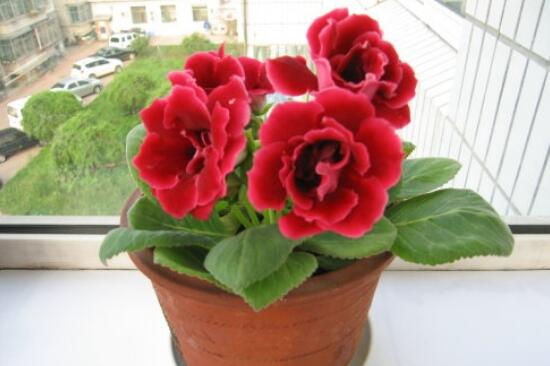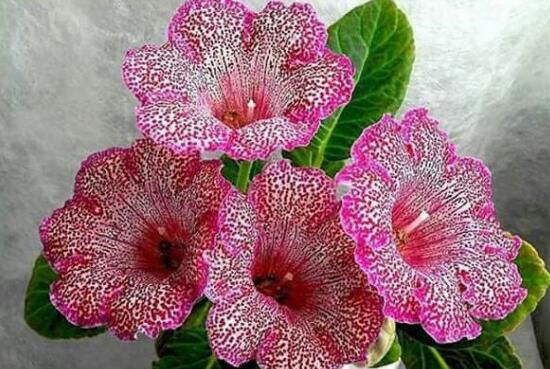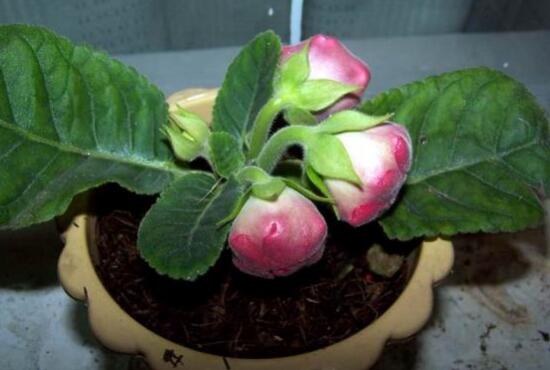How to water paulownia, the watering method of paulownia / see dry and wet / no water on the leaf surface
The big paulownia flower, a common beautiful flower, gives people a sense of petite and exquisite as a whole, and the emerald green leaves and colorful flowers all show a beautiful scene. However, these beauties need us to take good care of them, especially watering. We can't make mistakes. So, how to water the paulownia? The following is the watering method of paulownia. Let's go and have a look.
First, how to water the paulownia family, the method is very important

To raise paulownia flowers, what flower friends like to do most is watering, but watering is a technique, not even if you have more or less. Less watering, big paulownia withered, watered too much, big paulownia leaves yellowing, and big paulownia leaves can not touch water. Therefore, there must be a way to water the big paulownia, and we are specifically required to move on.
2. Watering methods of paulownia (1) watering principles
Although the breeding method of paulownia is simple, we can not be careless in watering. According to the characteristics of wetting but avoiding stagnant water, watering should follow the principle of "no dry, no watering, watering thoroughly", that is, the basin soil should be watered thoroughly after the basin soil is dry. As for how to judge whether to water the big rock tree, there are two techniques:
1, knock on the basin: tap the 1x3 of the big paulownia flowerpot with your fingers, the sound is clear and clear that there is enough water in the flower soil, and the dull sound means that the basin is dry, so it needs watering at this time.
2. Explore the soil: flower friends can insert their fingers into the 1PUBG 3 of the basin soil to feel it. If it's wet, don't water it. If it's dry, you can't even put your fingers into it. It's time to water it.
(2) can paulownia leaves be watered?
Unlike other flowers, paulownia leaves grow fluff, once stained with water droplets, it is very perishable, so can the leaves be watered? Obviously not.
(2) watering method
Dayantong likes a wet environment, but it is also afraid of stagnant water, and its leaves can't touch water. Therefore, when watering the tree, do not spray water on the flowers and leaves of the plant. The best watering methods are as follows:
1. Watering along the edge of the basin
With one hand, he gently pushed the flowers and leaves of the tree tree, causing the other hand to slowly and evenly water the water along the edge of the basin. In order to avoid watering too much, after watering, we should also dig the soil 2 cm deep, take a look at the state of the soil, and keep it moist here.
2. Watering by immersion
In order to prevent water from splashing on the leaves when watering, it is best to use the immersion method: put the flowerpot into a large shallow basin filled with water, through the suction of the soil, the water is inhaled and sprayed from the drain hole, and then absorbed by the plant. This has many benefits, not only to prevent too much watering, but also to avoid water on the leaves, but also to meet the water requirements of the plant.
Generally speaking, the big paulownia flowers are not difficult to raise, but not difficult does not mean that they can be raised casually, especially in watering and fertilizing. Therefore, in order to produce beautiful flowers, we should master the watering method and fertilization method. Combine them, and you will get a beautiful pot of flowers.
The breeding methods and matters needing attention of how to raise paulownia
Because the seeds of paulownia are very small, many flower friends have repeatedly failed to sow seeds, how to raise them? Next, let's take a look at the breeding methods and points for attention of paulownia.
The culture method of paulownia:
1. Soil: the basin soil can be mixed with rotten leaf soil, garden soil and barnyard manure, or mixed with 3 parts of peat, 1 part of perlite, 1 part of river sand and a small amount of base fertilizer, or mixed with rotten leaf soil, coarse sand and vermiculite.
2, watering: usually appropriate amount of watering, too much is easy to cause tuber rot, leaves withered and yellow, or even the whole plant death. In the period of high temperature in summer, it is watered once or twice a day. Watering should be uniform, not too dry and wet, suddenly hot and cold. Rain must be avoided during flowering. The potted soil is drier in winter.
3. Illumination: paulownia is a semi-positive plant and likes semi-shady environment. Therefore, attention should be paid to avoid strong sunlight during the growth period, and the environment should not be too dry. In summer, it should be placed in a place with scattered light and good ventilation under the shade shed for maintenance, otherwise it is very easy to cause the leaves to wither.
4. Temperature: the suitable temperature for growth is 10-25 ℃. There are different requirements in different seasons, 18: 25 ℃ from January to October, and 10: 12 ℃ from October to January. The suitable temperature can make the leaves grow luxuriantly and green, and the flowers are large and bright.
5. Fertilization: paulownia is a good fertilizer, from leaf expansion to flowering, the mature thin organic liquid fertilizer is applied once a week, and phosphate fertilizer is needed after flower bud formation. Do not stain the foliage when fertilizing. After each fertilization, spray clear water once to keep the leaves clean.
6. Insect pests: paulownia is prone to leaf snail pests, which make the leaves yellow and fall off, and lead to death in serious cases. When it is found that there are red spiders on the leaves, 5% nisolone emulsion can be sprayed 1000 times, the control effect is very good. It is generally sprayed once a week, 2-3 times in a row.
Matters needing attention in the culture of paulownia:
Flowering should pay attention to avoid rain, the temperature should not be too high, can prolong the flowering period. Usually watering is to pay attention to, the big paulownia flowers, leaves have villi, water droplets should not stay in the leaves for a long time, otherwise it will make the leaves rot, so avoid spraying water to the flowers and leaves. When fertilizing, we should also pay attention not to stain the leaf surface, otherwise, it is easy to cause leaf rot.
During the dormant period in winter, the basin soil should be kept slightly drier, if the temperature is lower than 8 ℃ and the air humidity is large, it will cause tuber rot. High temperature and humidity is disadvantageous to plant growth, so it needs proper shade and should be placed in a place with scattered light and good ventilation under the shade shed, otherwise it is easy to cause leaf withering.
More information on how to raise paulownia, breeding methods and matters needing attention
Dayantong has a poetic name-falling snow mud. It is so beautiful that it seems to come from a painting. So, do you know how to raise paulownia? Friends who do not know can follow the editor to understand the breeding methods and matters needing attention of paulownia.
Before planting paulownia, let's first understand the morphological characteristics of paulownia:
Perennial herbs, tubers oblate, aboveground stems very short, plant height 15-25cm, the whole plant densely covered with white tomentose. Leaves opposite, fleshy and large, paulownia ovoid or long oval, serrate; leaf veins raised, pedicels growing from leaves. Flowers terminal or axillary, Corolla bell-shaped, apex round, 5-6 lobed color rich, there are pink, red, purple-blue, white, complex color and other colors, large and beautiful. Capsule, seeds mature 1 month after anthesis; seeds brown, small and many.
The culture method of paulownia:
1. Soil: the basin soil can be mixed with rotten leaf soil, garden soil and barnyard manure, or mixed with 3 parts of peat, 1 part of perlite, 1 part of river sand and a small amount of base fertilizer, or mixed with rotten leaf soil, coarse sand and vermiculite.
2. Watering: large paulownia flowers and leaves are fluffy, and once they are stained with water droplets, they are very perishable, so do not spray water on the flowers and leaves. It is best to use the immersion method to water. Usually appropriate amount of watering, too much is easy to cause tuber rot, leaves withered and yellow, or even the whole plant death. In the period of high temperature in summer, it is watered once or twice a day. When the air is dry, you should often spray water around the plant to increase the humidity of the environment. Watering should be uniform, not too dry and wet, suddenly hot and cold. Rain must be avoided during flowering. The potted soil is drier in winter.
3. Sunshine: paulownia is a semi-positive plant, which should be properly shaded to avoid direct light. In winter, the seedlings should be sunny enough to promote the healthy growth of the seedlings, and in summer, they must be carefully maintained in a ventilated shade with scattered light. During the growth period, the light should not be too strong, otherwise it will inhibit growth. It is appropriate to extend the sunshade time when flowering, which is beneficial to prolong the flowering period.
4. Temperature: the suitable temperature for growth is 10-25 ℃. There are different requirements in different seasons, 18: 25 ℃ from January to October, and 10: 12 ℃ from October to January. The suitable temperature can make the leaves grow luxuriantly and green, and the flowers are large and bright.
5. Fertilization: paulownia is a good fertilizer, from leaf expansion to flowering, the mature thin organic liquid fertilizer is applied once a week, and phosphate fertilizer is needed after flower bud formation. Do not stain the foliage when fertilizing. After each fertilization, spray clear water once to keep the leaves clean. Water droplets should not stay in the leaves for a long time, otherwise they will rot.
6. Insect pests: paulownia is prone to leaf snail pests, which make the leaves yellow and fall off, and lead to death in serious cases. When it is found that there are red spiders on the leaves, 5% nisolone emulsion can be sprayed 1000 times, the control effect is very good. It is generally sprayed once a week, 2-3 times in a row.
Matters needing attention in paulownia culture: water should be watered slowly along the basin mouth with a thin-nozzle spray pot to avoid water droplets on the leaves and buds of paulownia. If there are water droplets, it should be dried with toilet paper in time. Because there is water on the leaves, it is easy to cause the leaves to rot.
Paulownia trees are small, many flowers, large, colorful, used to decorate home study, balcony teahouse effect is better, is an ideal potted flower, the breeding method of paulownia is introduced here, I hope it will be helpful for everyone to plant paulownia!
- Prev

How to fertilize the big paulownia, the fertilization method of the big paulownia flower / leaf surface can not be fertilized.
For the big paulownia flower, flower friends should be no stranger, it is a wide variety of flowers, with rich colors, in the green leaves set off, it is particularly charming. However, if you want the beauty of the big paulownia blossom, fertilization is a link that can not be ignored, so how to apply fertilizer?
- Next

Why is the big paulownia rotten ball? what to do if the big rock tree rotten ball / dig the ball, cut and rot and replant
As a common indoor farmed flower, paulownia flower friends should be no stranger, its leaves are large and green, the flowers are beautiful and colorful, and they are very ornamental indoors. But in the process of breeding, many flower friends will encounter the phenomenon of rotten balls, so why is the big paulownia rotten? What should I do if the big paulownia rotten ball?
Related
- Fuxing push coffee new agricultural production and marketing class: lack of small-scale processing plants
- Jujube rice field leisure farm deep ploughing Yilan for five years to create a space for organic food and play
- Nongyu Farm-A trial of organic papaya for brave women with advanced technology
- Four points for attention in the prevention and control of diseases and insect pests of edible fungi
- How to add nutrient solution to Edible Fungi
- Is there any good way to control edible fungus mites?
- Open Inoculation Technology of Edible Fungi
- Is there any clever way to use fertilizer for edible fungus in winter?
- What agents are used to kill the pathogens of edible fungi in the mushroom shed?
- Rapid drying of Edible Fungi

